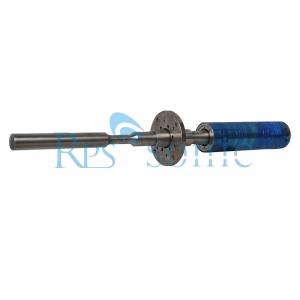

Add to Cart
Parameter
Introduction:
Ultrasonic is an effective auxiliary sterilization method, which
has been successfully used in wastewater treatment, drinking water
disinfection and other fields. There are also many researches in
the application of liquid food sterilization, such as beer, orange
juice, soy sauce and so on.
Ultrasound refers to sound waves with a frequency greater than 20
kHz. Its high frequency and short wavelength not only have the
characteristics of good directivity, high power, and strong
penetrating power, but also cause cavitation and a series of
special effects, such as mechanical effects. , Thermal effects,
chemical effects, etc.
It is generally believed that the bactericidal effect of ultrasound
is mainly caused by the cavitation effect produced by it. In the
process of ultrasonic treatment, when high-intensity ultrasonic
waves propagate in a liquid medium, longitudinal waves are
generated, which results in areas of alternating compression and
expansion. These areas where the pressure changes are likely to
cause cavitation and form microbubble nuclei in the medium. At the
moment of adiabatic contraction and collapse, the microbubble
nucleus exhibits a high temperature above 5000 ° C and a pressure
of 50000kPa, which can cause some bacteria in the liquid to die,
inactivate the virus, and even destroy the cell walls of some
smaller microorganisms. Its scope is limited.
Advantage
Fast speed, more mature and easy to operate, no harm to human body
and no damage to items.
Disadvantage
Disinfection is incomplete and there are many influencing factors.
Generally, it is only applicable to liquids or objects immersed in
liquids, and the processing capacity should not be too large. The
research on the application of ultrasonic to non-thermal
sterilization of food is not systematic and comprehensive. The
research on the ingredients and the potential safety issues that
ultimately result is insufficient.
Application:
Food industry applications
Ultrasonic sterilization is suitable for liquid food such as fruit
and vegetable juice beverages, alcohol, milk, mineral water, soy
sauce. Compared with the traditional high-temperature heating
sterilization process, ultrasonic sterilization does not change the
color, aroma and taste of food, nor does it destroy food
components. And its ultrasonic cavitation can improve the
coagulation effect of bacteria, make the virulence of bacteria lose
or die, so as to achieve the purpose of sterilization.
Fruit and vegetable juice drinks
Ultrasonic sterilization technology can reduce the browning of tea
polyphenols and improve the quality of green tea beverages.
Milk
Ultrasonic sterilization is used to keep raw milk fresh, with a
sterilization rate of 87%, no damage to nutrients, and freshness
preservation at 15 ° C for 45 hours.
soy sauce
Ultrasonic sterilization of soy sauce is fast, without foreign
additives, harmless to the human body, and harmless to items.
